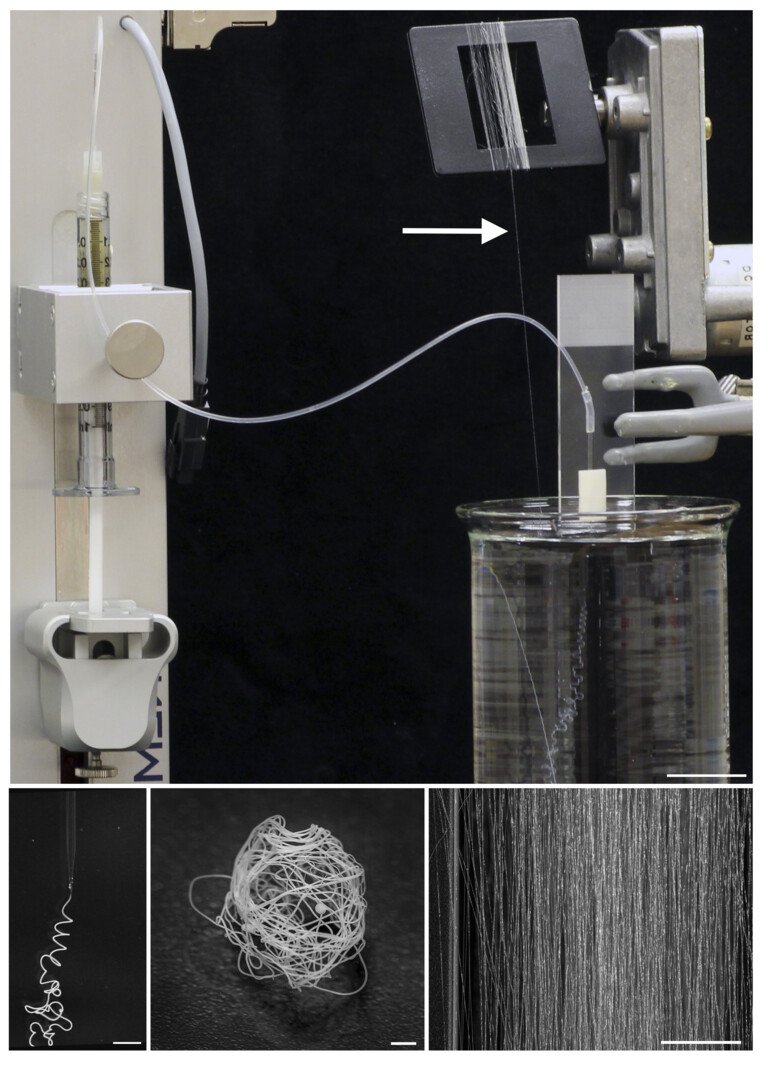

Our research
We use spider silk technology for biomedical applications. One line of our research concerns making artificial spider silk fibers and hydrogels for use in regenerative medicine. We have successfully cultured a large number of different human stem cells on our scaffolds and shown that the cells van be differentiated in the three-dimensional environment of the spider silk scaffold.
Another line of research is focused on the development of large-scale production methods for making artificial silk fibers for the fiber industry. The silk fibers we produce are sustainable and can be spun without the use of harsh solvents and high temperatures, unlike widely used petroleum-based fibers.
A third line of research concerns the use of a spider silk protein domain for efficient production of proteins and peptides. This technology can be used to produce valuable proteins but also to immobilize these in the hydrogels or fibers – thereby making bioactive materials.
Our lab is located at Karolinska Institutet and at the Swedish University of Agricultural Sciences (SLU).
The videos above are from Andersson, Jia et al., Nat Chem Biol. 2017.
The video above is from Schmuck et al. Materials Today. 2021.
Some of our research problems
- Will we be able to mimic the mechanical properties in natural spider silk fibers, in artificially made spider silk fibers?
- Will we be able to replace damaged tissues and organs by using artificially produced spider silk as implants?
- Will we be able to produce valuable and aggregation prone proteins with low solubility by using Nature's own solubility increasing domain (NT)?
